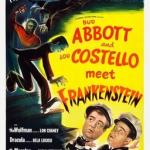![https://commons.wikimedia.org/wiki/File%3ADonald_Trump_(8567813820)_(2).jpg; By Gage Skidmore from Peoria, AZ, United States of America (Donald Trump) [CC BY-SA 2.0 (http://creativecommons.org/licenses/by-sa/2.0)], via Wikimedia Commons](https://wp-media.patheos.com/blogs/sites/533/2016/05/Donald_Trump_8567813820_2.jpg)
It did not take long for the AP to put out its fact-check of Trump’s speech; here’s a link to the version published by the Chicago Tribune.
I’ll be the first one to say that Trump’s speech was, by and large, vapid, and full of platitudes. Reason.com put out an alternate “fact-check” identifying 12 whoppers, including the claim that “Every problem can be solved” and “Every hurting family can find healing and hope.”
But the AP “fact-check” was itself foolish, though, to its credit, it did not actually identify items as “true” or “false” but just marshalled “the facts” in a way that suggested it was calling Trump’s speech whopper-ridden.
- “According to the National Academy of Sciences, our current immigration system costs America’s taxpayers many billions of dollars a year.”
The AP’s fact check pulls up the executive summary from this report, which it cites practically verbatim to say that
The report found that while first-generation immigrants are more expensive to governments than their native-born counterparts, primarily at the state and local level, immigrants’ children “are among the strongest economic and fiscal contributors in the population.” This second generation contributed more in taxes on a per capita basis, for example, than did non-immigrants in the period studied, 1994-2013.
The report found that the “long-run fiscal impact” of immigrants and their children would probably be seen as more positive “if their role in sustaining labor force growth and contributing to innovation and entrepreneurial activity were taken into account.”
The report itself seems not to be available online, and I’m not going to pay the $95 to purchase it, but the Center for Immigration Studies analyzed this in depth, and reported, among other things, that
Making reasonable assumptions, the NAS report estimates that the actual benefit to the native-born could be $54.2 billion a year. But relative to the income of natives the benefit is very small, representing a “0.31 percent overall increase in income” for native-born Americans (p. 128).
To generate that benefit, immigration has to reduce the wages of natives in competition with immigrant workers by $493.9 billion annually. But business gain $548.1 billion from these lost wages, for a net gain of $54.2 billion.1 Unfortunately, the NAS does not report this large income redistribution, though it provides all the information necessary to calculate it.
In other words, once again, there may be a benefit to the average American, but that masks real losses to lower-income, lower-skill workers.
I am also skeptical of the statement that the second generation does better economically than children of native-born Americans; everything I’ve read suggests that, among children of unskilled immigrants, the reverse is true. But, again, I can’t see how the NAS report supports that claim without paying $95. And the notion that the bodies they provide, in the long-run, are a plus for the economy, is based on notions that population growth is by definition a good thing – which I thought we’d abandoned.
2. “We’ve saved taxpayers hundreds of millions of dollars by bringing down the price” of the F-35 jet fighter.
The AP says, this happened before Trump took office; therefore, he can’t take credit. Of course, the sequence of events is “Trump tweeted, Lockheed-Martin responded with a cost reduction announcement.” The AP suggests this was already in the works (“Pentagon managers took action even before the election to save money on the contract”) but it is clear that Lockheed-Martin needed some positive PR. Whether Trump, and the need to demonstrate cost-savings, prodded them to make more concessions than they otherwise would have is admittedly unknown.
3. “We will provide massive tax relief for the middle class.”
True to its format of not providing a “true” or “false,” the AP just states that prior proposals provided the largest reductions for the wealthy, and $1000 in reduction for the middle quintile.
4. “Ninety-four million Americans are out of the labor force.”
AP reminds readers that this includes everyone ages 16 and up, including retirees. This number has been increasing due to growing numbers of young people attending school for longer (though in many cases, this is an undesirable consequence of the difficult labor market, as they get advanced degrees that don’t have any concrete benefit), and growing numbers of retirees. But remind me to tell you about Nicholas Eberstadt’s book Men Without Work that I’m reading now, which reports that, though the 94 million figure is not the right one to use, there is a serious problem with men leaving the workforce, even at prime working age.
The AP says, “It’s true that some of those out of the workforce are of working age and have given up looking for work. But that number is probably a small fraction of the 94 million Trump cited.” But that number is real, and is available, and to shrug it off as unimportant is a disservice to readers.

















